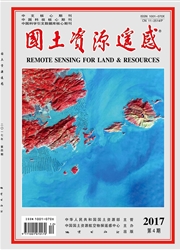

 中文摘要:
中文摘要:
近地层气温是生态环境的重要因子,是描述地表与大气能量交换与水分循环的关键变量。气象站点观测能够提供点尺度上的准确气温资料,但是大多数地球系统模型需要空间连续的参数来模拟物理过程。遥感提供了比地表气象观测数据更理想的空间异质度信息,为快速获取大尺度的气温时空信息提供了新的途径。主要介绍了目前常用的几种遥感气温估算方法,包括温度一植被指数(TVX)方法、经验统计方法、神经网络方法和能量平衡方法等等,并对这些方法的优、缺点分别进行了评述。最后,指出今后应该加强辐射传输过程的机理研究、气温的时空尺度转换以及云检测算法等方面的研究。
 英文摘要:
英文摘要:
Near surface air temperature is an important environment variable in many earth system models, because it is a key factor in the energy and water exchanges between land surface and atmosphere. Detailed measurements of spatial and temporal variations of near surface air temperature are critical for the effective understanding of climate, hydrology, ecology, agriculture and terrestrial life processes. Traditionally meteorological observation could provide accurate air temperature data at the point scale, but most earth system models need gridded input variables. Satellite remote sensing provides a straightforward and consistent way to observe air temperature at regional and global scales with more spatially detailed information than meteorological data. This paper systematically reviews the air temperature retrieving algorithms for thermal remote sensing data, which include TVX approaches, statistical approaches, neural network approaches and energy balance approaches. The main advantages and limitations of these four methods are also discussed. Finally, the development tendencies of estimating air temperature by remote sensing are pointed out, such as intensive research on thermal radiant transfer model, spatial -temporal scaling of air temperature and improvement of cloud detection.
 同期刊论文项目
同期刊论文项目
 同项目期刊论文
同项目期刊论文
 期刊信息
期刊信息
